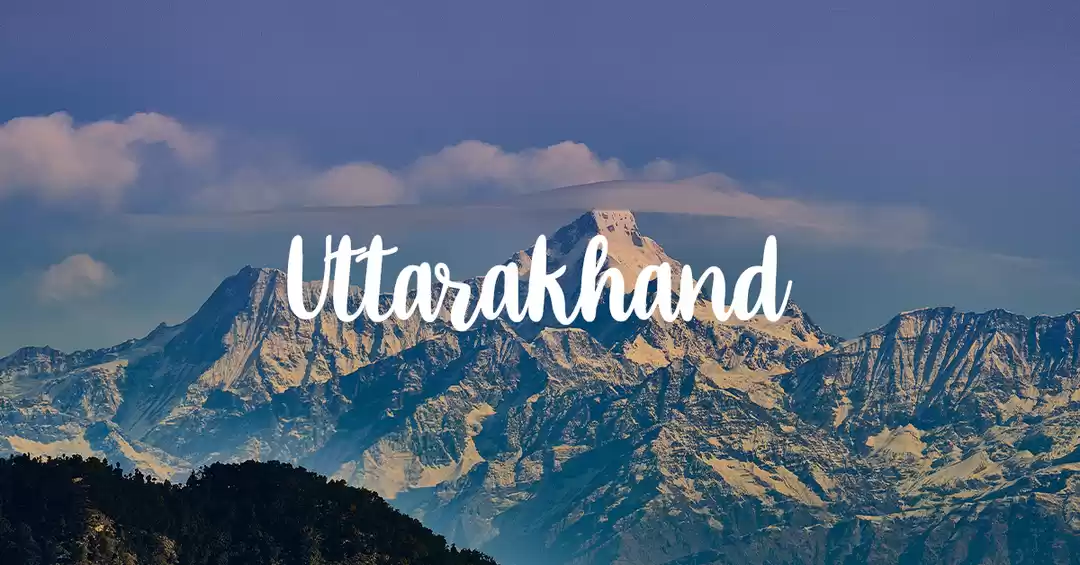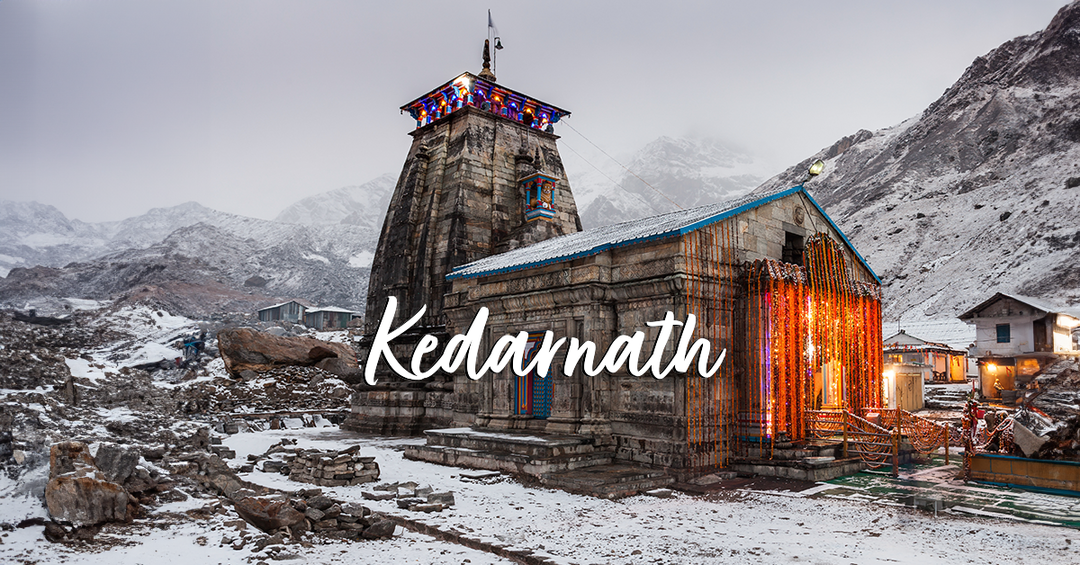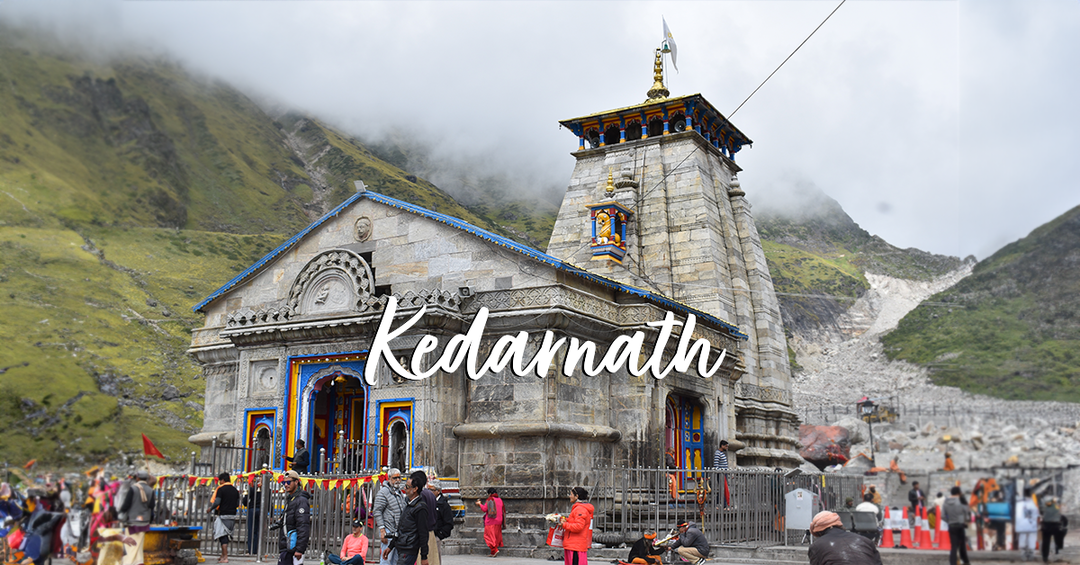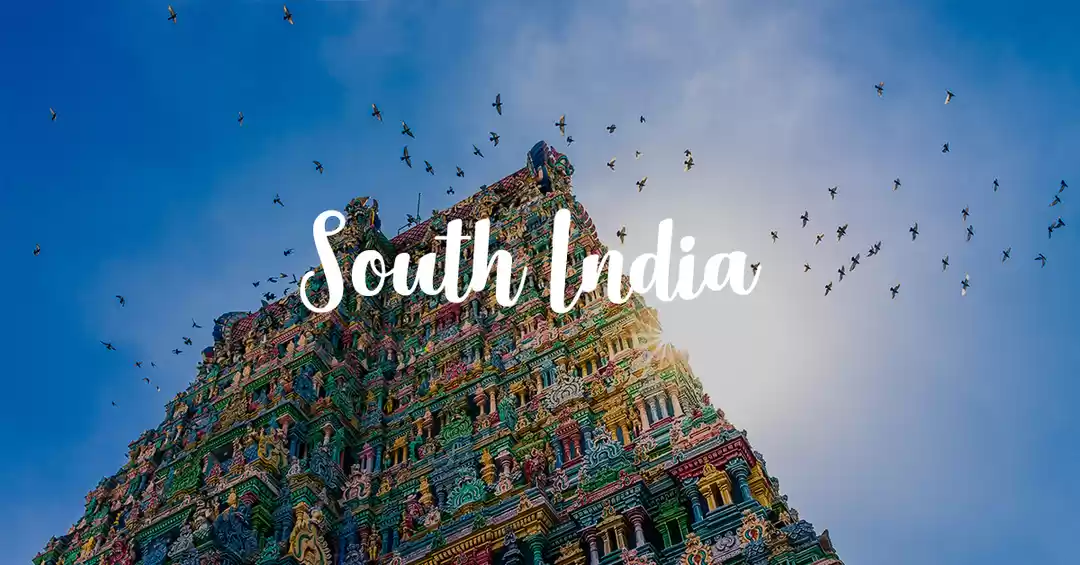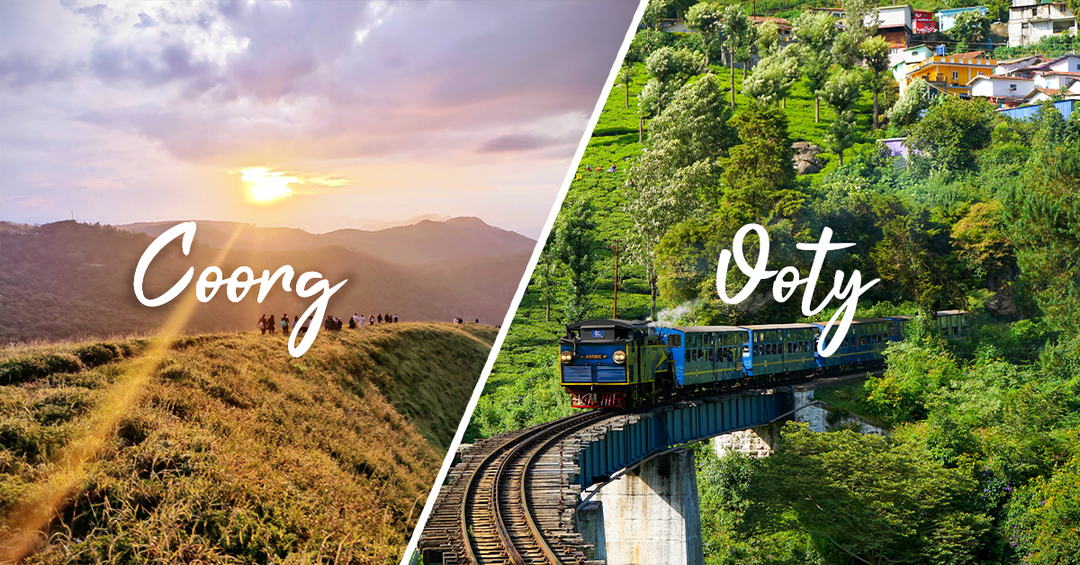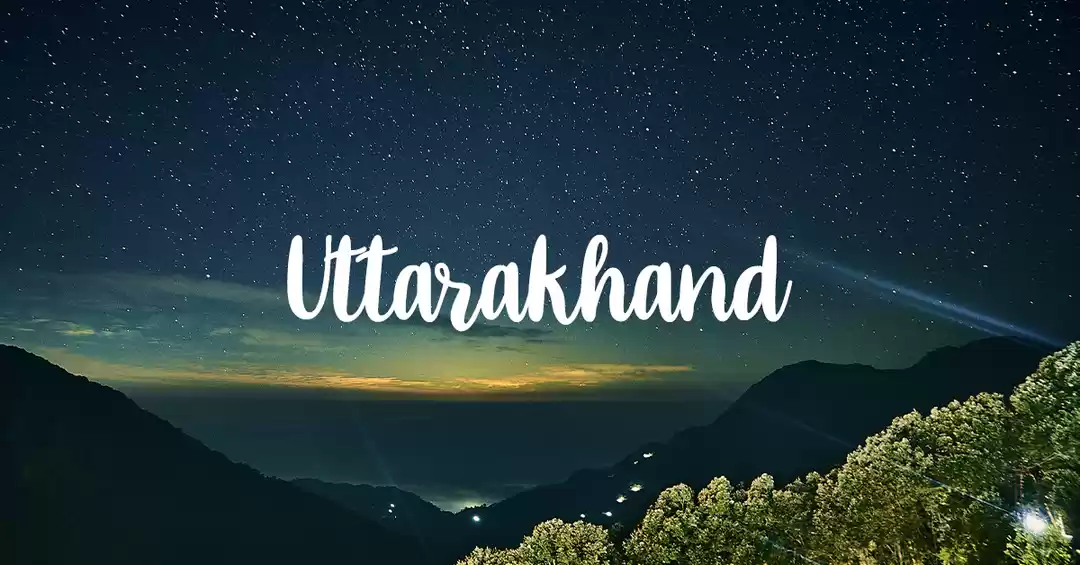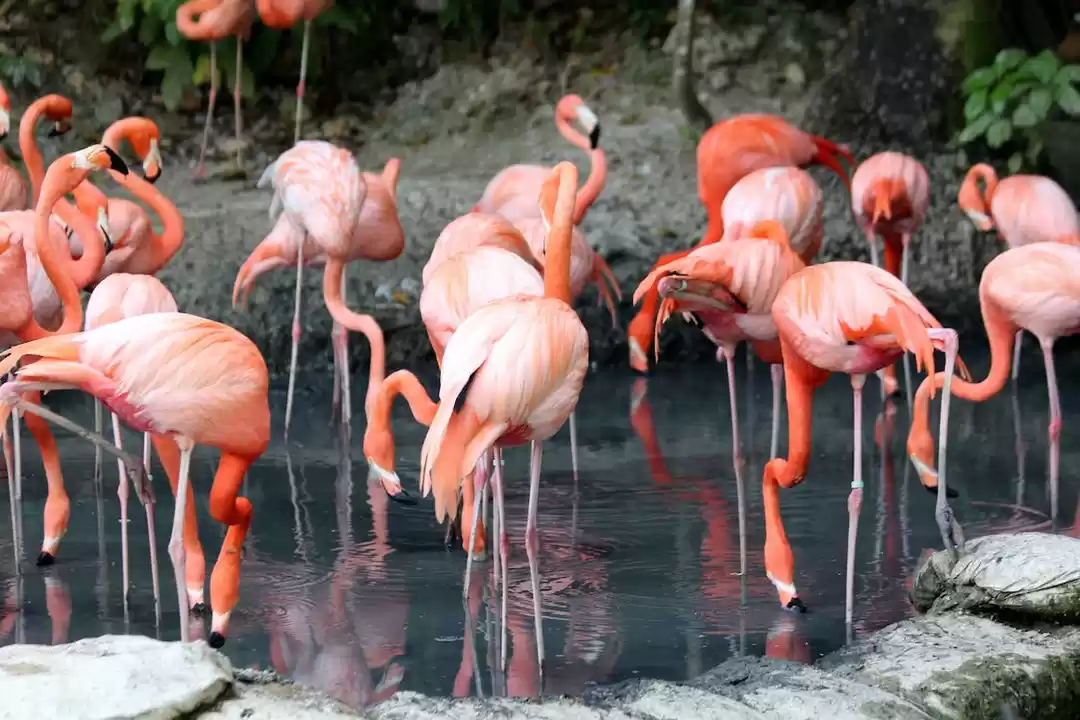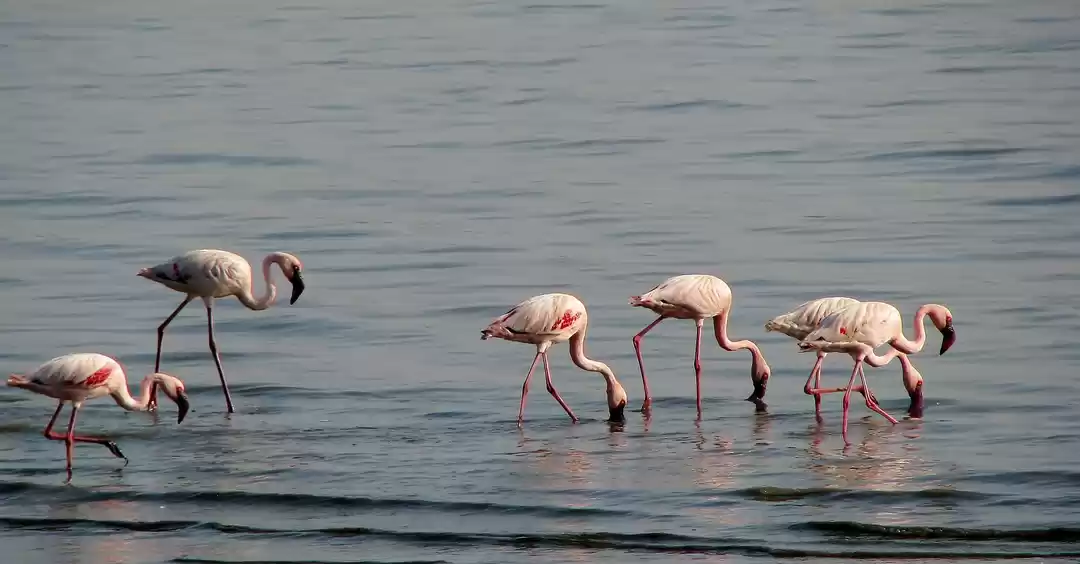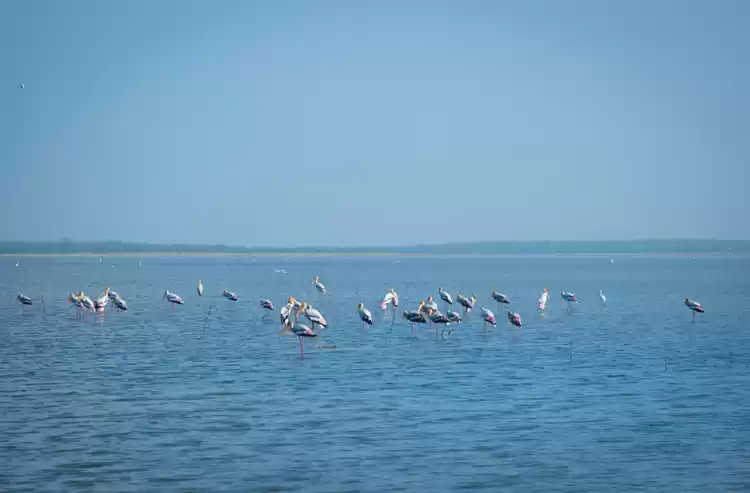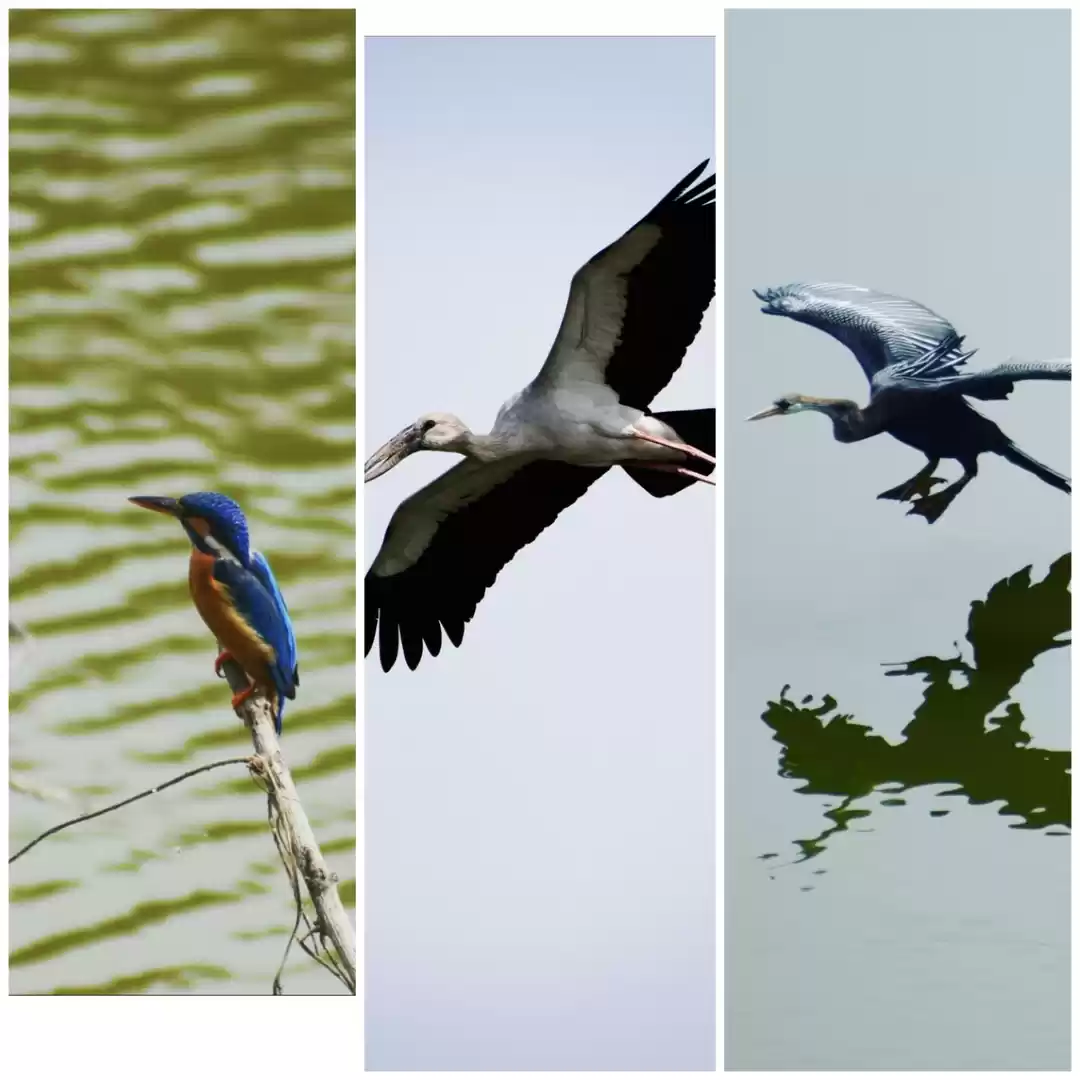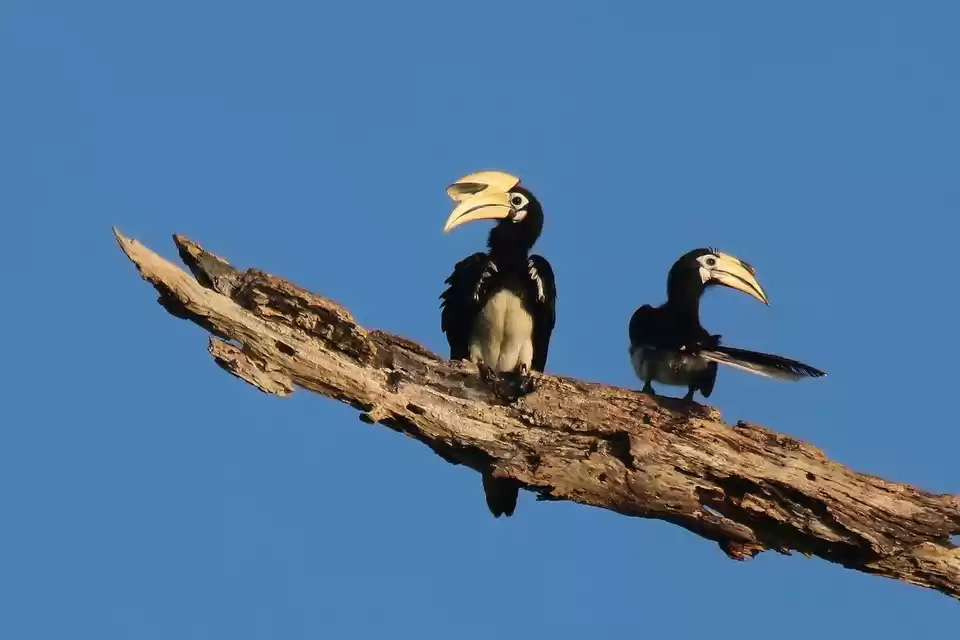
Pulicat Lake was a name I had unheard of until 3 years ago while tracing satellite images of water bodies on Google Maps after I had reached Sriharikota. This is my first birding blog and the maiden one though not an ornithologist career per se, but I was thrilled after this experience and now want to dwell more details of these birds’ habitat. Towards the end of this blog, I have shared a bonus place that you must visit if you are planning to make it to Pulicat.
The best season to visit is from October to March when the birds start coming to mainland India from cold countries of the Northern hemisphere. Such strange is the phenomenon that scientists say bird flocks travel miles away to the lake using the earth’s magnetic field as their compass for navigation. The birds choose the place suited to breed and hatch their chicks in the perfect climate offered with plenty of fishes, algae, insect to feed upon.
Considering Bangalore as the starting point it’s 7-8 hours’ drive of roughly 350kms towards Andhra Pradesh side of Pulicat lake. There are regular KSRTC buses plying between Bangalore and Sriharikota, but you must get down at Sullurupet town which is 16kms before the last destination. We arrived at the lake nearing dusk and spotted few migratory birds. I must say you must bring along a decent binocular and DSLR with good zooming resolution to capture these exotic birds in their paradise. Mobile photography can only prove good if you are able to camouflage yourself to a bird at 10-meter distance, but then pelicans or the camera-shy flamingoes would still be alert and not give you that pose. We spotted the Little Egret and a few pelicans before the lights faded out and we reached the end of the lake to Sriharikota and returned to Sullurupet for the tea and snacks.
There are 5-6 staying options in Sullurupet as per mobile apps but we choose to take the local's help for a night stay in a decent lodge. We settled in RSR residency on the main road in Sullurupet costing 700/- for the non-AC double bed stay. This is the nearest stay to the lake which one can get if planning to start the day early without traffic. In case you want to check-in please carry Adhar Card and Marriage certificate (in case you are married) as unmarried ones are a strict not here. We had hot dosa chutney and ghee pudi dosa from a nearby shop which was economical for the dinner. The night after return we geared up for the next dawn with charged up camera batteries, snacks, and water as there are hardly decent place on the entire 16kms stretch of the lake for food while you are frame catching the birds.
We started at around 6AM to sight the most sought out Flamingos who generally open the innings into the brackish water. Looking right then left and again turning heads like watching a tennis match in anticipation of the Pinkies turned out to be dispirited. The Flammy’s crossing anywhere on the 17km long stretch and landing on the water was a distant dream now we felt by 7AM. Nature didn’t disappoint us and presented us the non-flamingo avifauna (the birds of a particular region, habitat, or geological period) in the enormous Biodiversity stretching like a sea on both the sides. The clock at 7:15AM showed the perfect light conditions for photography. The black headed ibis performed air show crossing the single road between lake flying over above us multiple times welcoming us into their habitat. We were then up for some silent gazing of Asian open bill basking in the sun who were very careful of the homo sapiens coming closer to their territorial radar before they take off.
On the way we found a few bird viewpoints, which I would suggest are ideal for taking rest and viewing the wide Panorama the lake had to offer. We moved on ahead and were in for some vivid colors this time with the Painted Storks ready with their harpoon like beaks dipped till their lean knee level in marshy water of the lake was a delight to watch. Their pink color in the entire landscape was the most attractive of all as I had never seen the color over any bird or animal until its Holi (Indian festival). Spot billed Pelican hunting along with their other colorful cousins were also enjoying their long vacation in India hunting wading through the shallow lake searching for food with their long beaks darting front and back.
The long-legged Egret and Herons had their own demarcated areas and were almost present everywhere we went along the entire stretch of the road.
The place offers happy hunting for Brown headed gulls which spent their maximum time either in air or in the shallow water.
We saw the Great crusted tern, Lesser crested terns and Caspian tern often walking very near to the lakebed waiting for their prey or their fellow counterparts returning with the hunt for mutual sharing.
The Purple swamphen seemed too busy in its marshy world away from the distraction of the road and people around.
We also got to see a granny- grandpa pelican couple away from the crowd enjoying their last few trips to their sub-continent visit. The look in their eyes and the color of their now dull looking beaks and feather tells the stories of expeditions they have done after being born and coming back here year on year. The countless miles covered by them from being a group member to a group leader and now leading a retired life.
While the whole world was busy fishing Sand ploughers and Curlews were working their darts into the mud catching insect and planktons. We had stopper overs on this route and finished the snacks as breakfast which we carried along with us.
We reached Sriharikota slow and steady in the same old fashion looking right, then left and so forth until there was a sudden flap of wings from a pelican crossing the road in a splash.
We were not allowed inside ISRO without prior permission or coming as referral. As the sun started raising higher, the thought of sighting flamingo become diminished, and we asked locals who suggested us to visit this articles Bonus site Nelapattu Bird Sanctuary.
Nelapattu Bird Sanctuary
We then decided to head back to the Sanctuary which is 20kms from Sullurupet travelling back the to join NH16.
We were guided through the Google maps which showed no restaurants on the stretch which in fact was true and we then thought it was better to have proper breakfast in Sullurupet itself. Nevertheless, we had flamingo in mind, so hunger pangs stayed grounded. There is slight deviation left of NH16 which goes through the under bridge towards a railway crossing to finally reach our destination.
Nelapattu Bird Sanctuary is in a serene place away from people and villages and offers a great nesting place for the migratory birds. The entry fee per person is Rs. 40/- per adult; camera 150/- . The Sanctuary is open from 8AM to 5PM. My sincere request to not take vehicles inside as its only 800mtr inside after which you have to park the vehicle and walk furthermore. At 150/- parking charges I would suggest it for elderly or people who require assistance, as there is ample parking area outside the sanctuary at no extra cost plus you try to keep the place as much as pollution free.
Upon entry we saw few spotted deer, some caged parakeets. Initially I started thinking there’s not much I can hope from this place and started thinking to return, until when I started hearing massive chirping coming from the opposite end. In the middle of Sanctuary, you can find the museum of birds’ collection depicted in sculptures and photographs detailing on their origin and typical specifications pertaining to their physical structure. The place offered me enough explanation to know the names of the birds already capture in my camera from the Pulicat Lake. There is small shop a few meters away for having tea, coffee, biscuits, and nothing else.
At distance of around 300 meters further from the museum towards left you will reach the wetlands mainly for migratory water birds and be startled to see such an enormous bird’s flock on the treetops. The pathway to this sight seeing is a perfect spot in greenery which also offers shade from the sun. The lake wetland teeming with fishes offers the birds perfect and easy way of finding the food source right beneath their breeding area.
The birds sat in group of White (Pelicans) and Grey (Stork) on the different trees taking care of the community in the most talkative manner. I would recommend carrying a good quality Binoculars/ Zoom camera like a DSLR or Point and Shoot camera for getting a better view of the happening in the nest. I was luck to carry a DSLR along which helped capture good shots. There were multiple instances of birds flying out in search of fishing and returning to the same nest. Upon carefully examining the images I saw how the senior birds were coming with the prey engulfed in the throat and then spilling out (called regurgitate) directly to the chicks who were gladly receiving this meal. This would not have been possible on mobile phone.
There are 2 watch towers on the way and the one at the last offers a magnificent view of the lake and the green paddy fields a takes you a little closer to watch the Pelican fly over your head gladly with their open wings reminding of their prehistoric ancestor pterosaurs. With our sensory organs filled with this ambience and thrilling sight to behold, we started back towards the exit gate. We enquired with the in-duty person on the migration phenomenon of this area and got to know November to March is the time when birds come for hatching and fly back with their young ones after they are fully trained. These birds fly to Pulicat and the bird Sanctuary from across the country as well as regions as far as Siberia. The farmers of Nelapattu and their bird visitors have a symbiotic relationship. The bird 'Guano' (waste matter) acts as a natural fertilizer to the crops and the villagers in turn protect the birds. The search for the Flammy’s is still on for us and we want to explore more such sanctuaries in the time ahead.
Pulicat and Nelapattu Bird Sanctuaries offer a unique opportunity for bird enthusiasts to observe a diverse range of avian species in their natural habitat. From majestic flamingos to tiny warblers, these sanctuaries are a haven for bird watchers and nature lovers alike. Whether you're a seasoned bird watcher or a novice, visiting these sanctuaries is sure to be an unforgettable experience. So pack your binoculars, camera, and a sense of adventure, and head to Pulicat and Nelapattu Bird Sanctuaries to witness the beauty and wonder of the feathered world.







